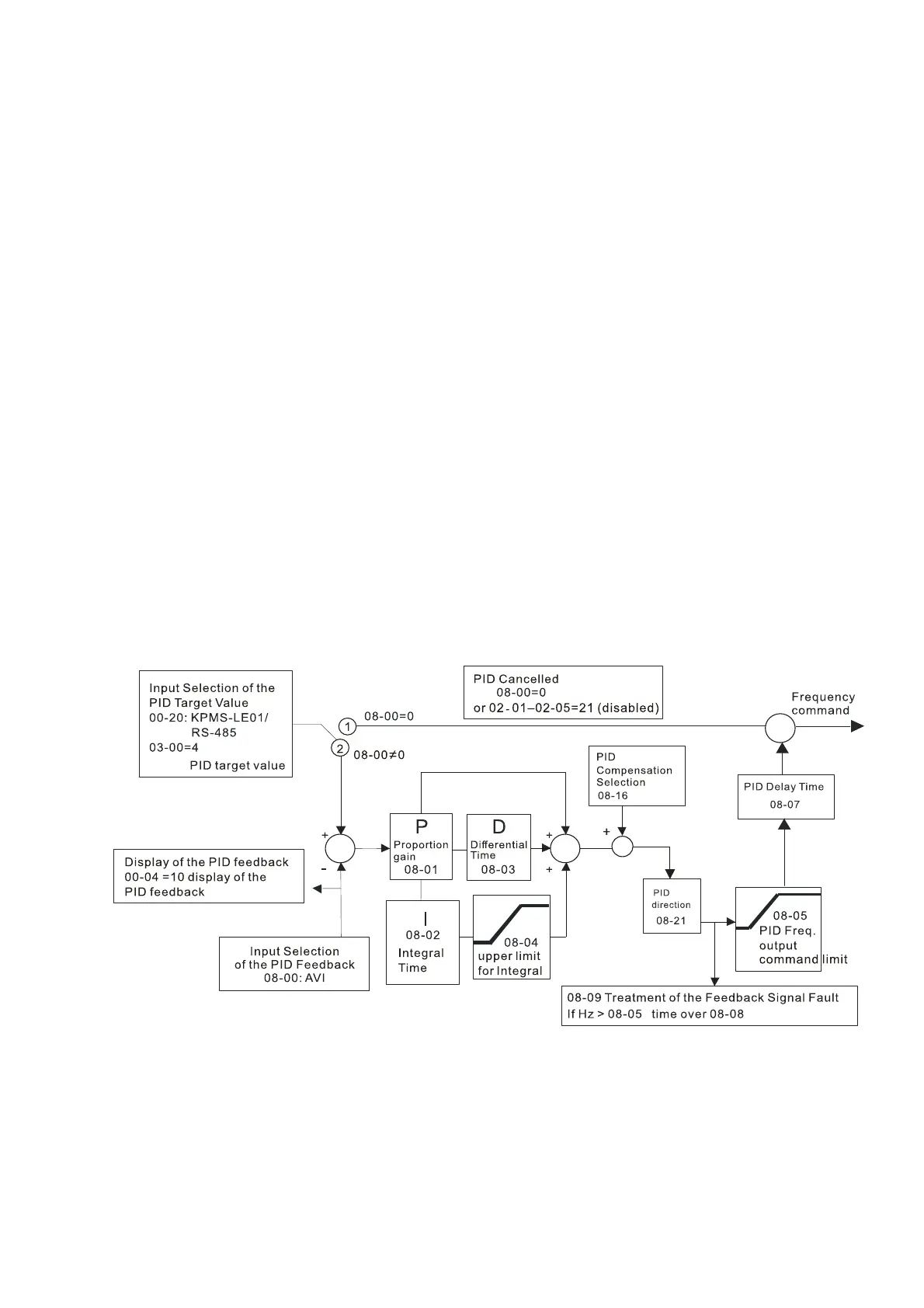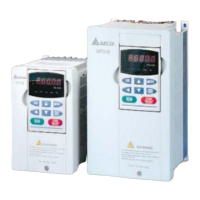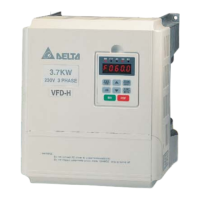Chapter 12 Description of Parameter SettingsME300
12.1-08-5
Inappropriate delay time setting may cause system error.
PI Control:
Controlled only by the P action, so the deviation cannot be entirely eliminated. In general, to
eliminate residual deviations, use the P + I controls. When you use the PI control, it eliminates
the deviation caused by the targeted value changes and the constant external interferences.
However, if the I action is too powerful, it delays the response when there is rapid variation. You
can use the P action by itself to control the loading system with the integral components.
PD Control:
When deviation occurs, the system immediately generates an operation load that is greater than
the load generated only by the D action to restrain the deviation increment. If the deviation is
small, the effectiveness of the P action decreases as well. The control objects include
applications with integral component loads, which are controlled by the P action only. Sometimes,
if the integral component is functioning, the whole system may vibrate. In this case, use the PD
control to reduce the P action’s vibration and stabilize the system. In other words, this control is
useful with no brake function’s loading over the processes.
PID Control:
Use the I action to eliminate the deviation and the D action to reduce vibration; then combine this
with the P action for the PID control. Use the PID method for a control process with no deviations,
high accuracy, and a stable system.
Serial connection
